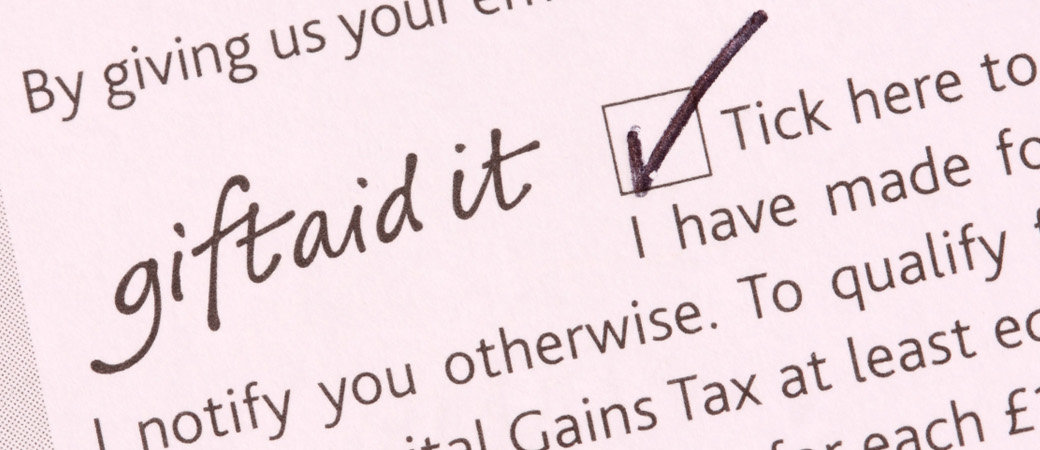
Gift aid and other tax-efficient ways to give

Charles Calkin, financial planner, James Hambro & Co.
The Office for National Statistics last moth published new data showing that the UK population made gift-aided donations of over £5bn to charity last year – the highest ever. This resulted in HMRC adding £1.27bn to the donations.
That’s good news. But on the same day it also released other interesting information that highlights the benefits for higher rate taxpayers of giving money to charity using the various tax-efficient schemes available. They enjoyed an additional half a billion pounds of income tax relief on Gift Aid alone. Total relief to individuals was £1.47bn.
Yes, it is possible to give and receive.
Below we explain how gift aid and other tax-efficient gifting schemes work and highlight a few ways you can find yourself enjoying far more than just the emotional pleasure of being generous.
Gift aid
Gift aid allows charities to reclaim the basic rate of tax on every £1 you donate. Though the basic rate of tax is 20%, the uplift is 25% because of the way the relief is calculated. HMRC say that for a basic rate taxpayer to give £1, they would have had to earn £1.25 (20% of £1.25 is 25p).
Higher rate (40%) taxpayers and additional rate (45%) taxpayers can claim back the difference between the basic rate of tax and the tax they paid – usually by reducing their income tax bill.
So if you are a 45% taxpayer giving £1,000 to a charity, the charity gets £1,250 and you can claim back £312.50, or knock it off your income tax bill for the year. Or, if you wish, carry back to the year before (when your marginal tax rate may be higher).
It means a £1,250 donation has actually cost you just £687.50.
To claim the tax back you must keep records of all gift aided donations (even trips to stately homes and museums that often encourage you to gift aid entry fees) and recording it in your annual tax return. It is well worth doing.
For those people whose earnings take them into the £100k to £121k bracket, gift aiding can be particularly helpful. For every £2 you earn in this bracket, you lose £1 of your tax free personal allowance. This is on top of paying 40% income tax. The effect is a marginal tax rate of 60%.
Many of our clients in this position will give money earned over £100k to charity so as not to be dragged into this pernicious tax rate.
Tag a bag
An extension of gift aiding cash donations is to gift aid donations to charity shops. If you donate clothes and items to places which have a gift aid “tag a bag” scheme, they will let you know how much your goods sell for (which is satisfying in its own right) and you can then declare this as you would cash within the gift aid declaration on your tax return.
This is especially useful if you’re house clearing after the death of an elderly relative as you often have to pay for “house clearance”. If the goods now belong to you, ferrying them to a range of charity shops can save money all round.
The good thing is that many of these shops – certainly Oxfam – have become quite expert in understanding the worth of more valuable items so things like expensive jewellery, ornaments and first edition books are sold at something approaching their true value.
Gifting shares
Another way to give and receive is to take advantage of the little-used exemption of giving an investment “fat with gain”.
Say you bought 1,000 shares in Apple Inc back in July 1981, when they were worth as little as 21c each (so cost you $210). Oh, if only! Today they are priced at over $140 each, meaning that your holding is worth at least $140,000 – over £108,000.
Selling qualifying shares could incur a 20% capital gains tax (CGT) cost. If you transfer the shares (using a simple Stock Transfer form) to the Charity they can exploit their tax-sheltered status to sell them free of CGT.
The charity does not get the 25% uplift that it gets from cash donations, but it does avoid having to pay any CGT, and so does the donor. You can offset the value of the donation against your income tax bill. Gifts of shares and property resulted in £70mof tax reliefs for individuals in the last financial year.”
Inheritance tax
You can also take advantage of tax-efficient gifting strategies on your death. If you leave 10% of the element of your estate on which you pay inheritance tax, the rate of IHT your beneficiaries will pay is reduced from 40% to 36%.
The effect of this is that those who were already planning to gift between 4% and 10% of their net estate to charity will actually leave their beneficiaries better off by lifting this to the full 10%.
Others who were not planning charitable gifts may find the numbers encourage them to think again. Someone with an estate on which they pay inheritance tax of £250,000, leaving £25,000 to charity, reduces the impact on beneficiaries by £6,000.
IHT gifting cost HMRC £840m in tax relief last year – twice what it did in 2010/11, so a growing number of people seem to be adopting the scheme.
We all know tax rules change constantly so it is important to keep abreast of changes.
Many of our clients are very generous givers to charity – do contact us if you want to discuss any of these options.
CCalkin@jameshambro.comPosted on 30 August 2017